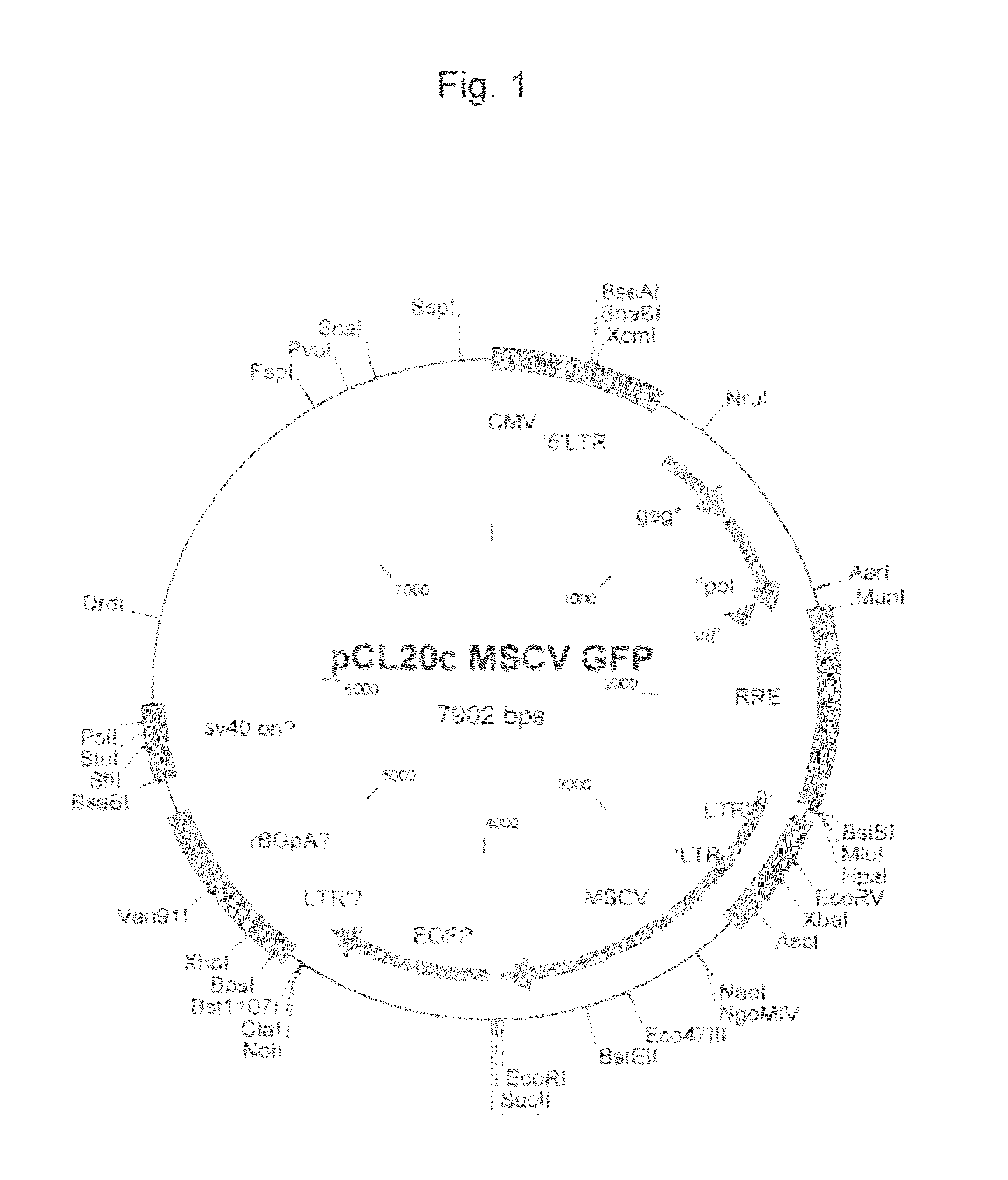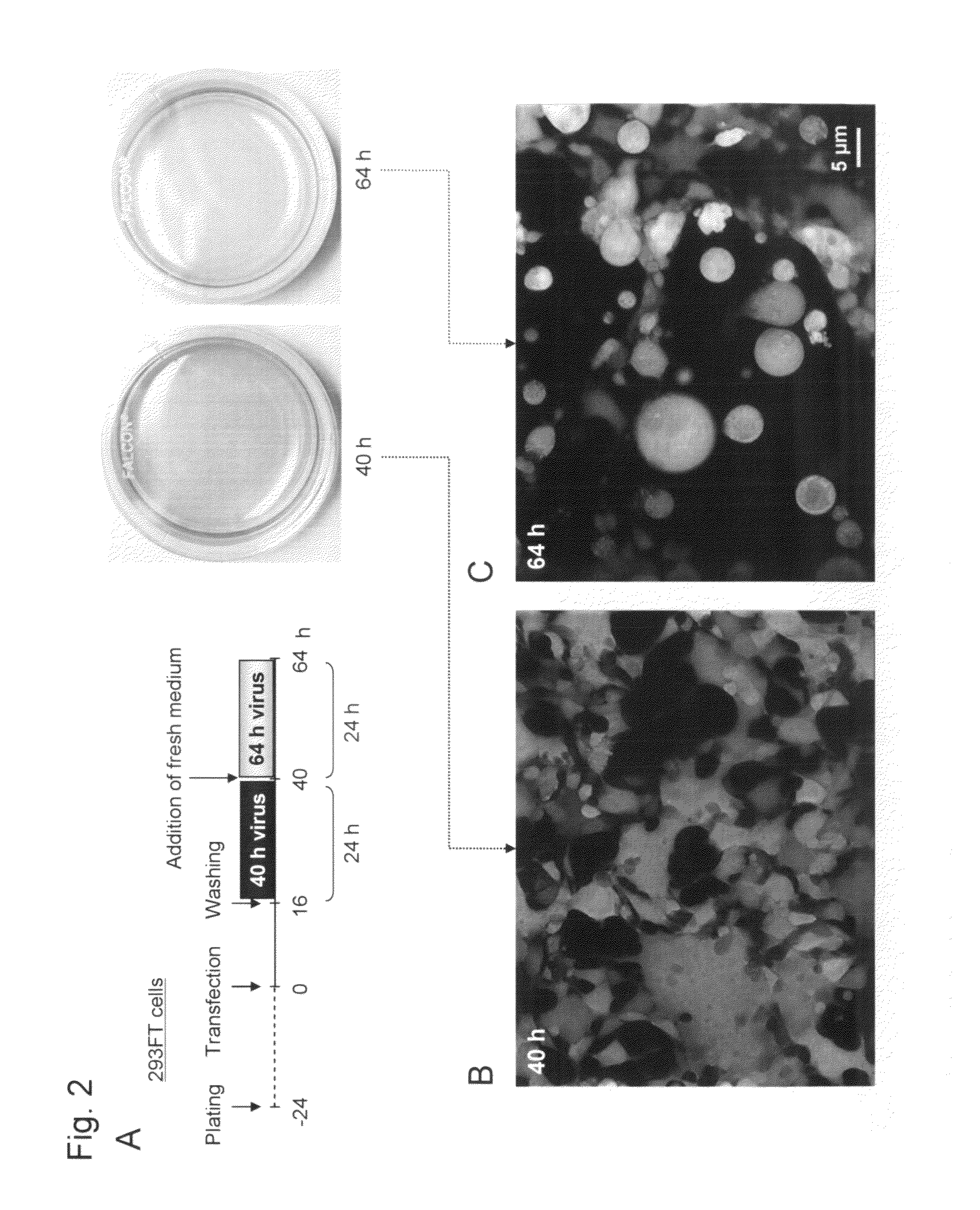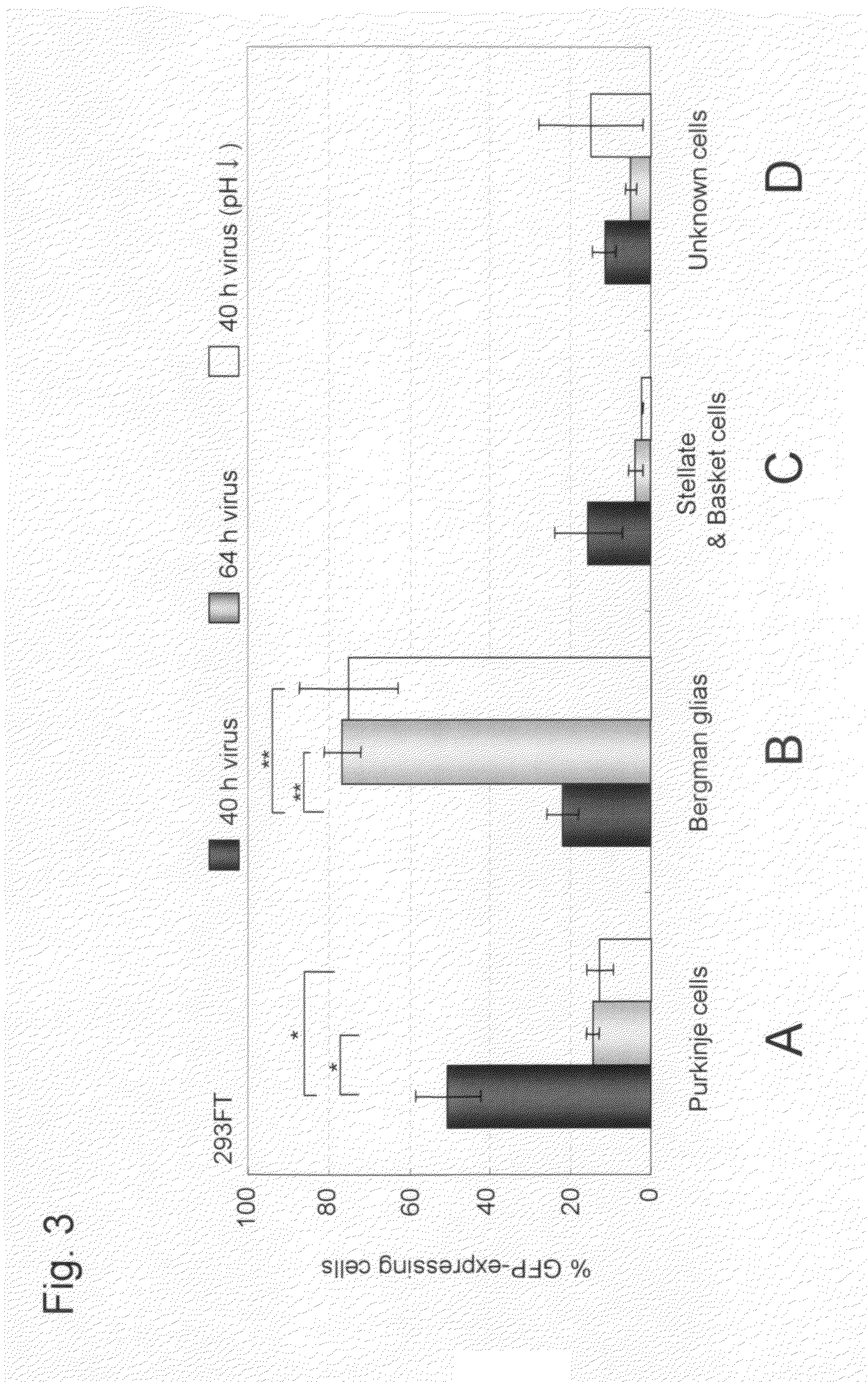Purkinje cell-tropic viral vector
a cell-tropic, viral technology, applied in the direction of viruses, drug compositions, dna/rna fragmentation, etc., can solve the problems of inability to regulate motor coordination, easy damage, and inability to smooth movement, and achieve the effect of reducing the side effects of gene transfer or expression in other neurons or glial cells, reducing the size of foreign genes which can be inserted in the vector, and increasing the promoter activity
- Summary
- Abstract
- Description
- Claims
- Application Information
AI Technical Summary
Benefits of technology
Problems solved by technology
Method used
Image
Examples
example 1
Influence of Culture Time after Transfection on Purkinje Cell Selectivity of Virus
(1) Virus Generation
[0094]The following procedures were performed in a P2 laboratory. HEK293FT cells were used in virus generation. As a culture medium, a conventional Dulbecco's modified Eagle's medium (D-MEM) supplemented with 10% bovine serum was used. HEK293FT cells in log phase growth were dispersed in a phosphate-buffered saline (Mg2+- and Ca2+-free) [PBS(−)] and subsequently plated onto a 10-cm dish (manufactured by Falcon) at a density of 5×105 cells per dish. To the 10-cm dish after plating, 10 ml of D-MEM containing 10% by weight of fetal bovine serum was added, and the cells were then cultured at 5% (by volume) CO2 at 37° C. 24 hours later, the culture medium in the dish was replaced by 10 ml of a fresh culture medium (D-MEM containing 10% by weight of fetal bovine serum). Then, the cells were cultured at 5% (by volume) CO2 at 37° C. for 0.5 hours.
[0095]The following plasmids: 6 μg of pCAGkG...
example 2
Influence of Culture Medium pH During Virus Generation on Purkinje Cell Selectivity
[0121]Based on the results of Example 1, the relationship between culture medium pH and Purkinje cell selectivity was studied.
[0122]According to Example 1, the pH of the culture medium containing a virus 40 hours after transfection was adjusted to 7.0 by the addition of diluted hydrochloric acid. Then, the virus was similarly purified and injected to the mouse cerebellums. 7 days later, brain sections were observed. Furthermore, a similar experiment was conducted using HEK293T cells which proliferate more slowly than HEK293FT cells and thus delay the acidification of the culture medium attributed to proliferation.
[0123]The pH (7.2) of the culture medium 40 hours after transfection was shifted by 0.2 to the acidic zone (pH 7.0). The virus was similarly injected to the mouse cerebellums. As expected, almost the same results as those provided by harvest 64 hours after transfection were obtained. Specific...
example 3
Influence of Serum on Purkinje Cell Selectivity
[0124]Viruses were generated by the similar procedures as in Example 1 using 9 kinds of bovine sera differing in lot shown in Table 2 and studied for their respective selectivity for Purkinje cells.
[0125]
TABLE 2Serum No.SuppliersOriginLOT No.S1GIBCOUSA1175763S2GIBCOMexico1214677S3EQUITECH-BIO, INC.USASFB30-1540S4EQUITECH-BIO, INC.USASFB30-1548S5Valley BiomedicalUSAJ31041S6BiowestDenmarkS04303S1750S7Biological IndustriesIsrael716543S8HyClone LaboratoriesUSAAPA20504S9HyClone LaboratoriesUSAANK19840S7-SF**Biological IndustriesIsrael716543SF; Serum free: HEK293T cells were transfected in the culture medium containing the serum S7. The serum was removed 24 h after the transfection.
[0126]As shown in FIG. 5, it was shown that selectivity for Purkinje cells largely differs depending on a difference in serum lot. Furthermore, it was confirmed that viruses are generated even under serum-free conditions, but have low selectivity for Purkinje cells...
PUM
| Property | Measurement | Unit |
|---|---|---|
| pH | aaaaa | aaaaa |
| pH | aaaaa | aaaaa |
| temperature | aaaaa | aaaaa |
Abstract
Description
Claims
Application Information
 Login to View More
Login to View More - R&D
- Intellectual Property
- Life Sciences
- Materials
- Tech Scout
- Unparalleled Data Quality
- Higher Quality Content
- 60% Fewer Hallucinations
Browse by: Latest US Patents, China's latest patents, Technical Efficacy Thesaurus, Application Domain, Technology Topic, Popular Technical Reports.
© 2025 PatSnap. All rights reserved.Legal|Privacy policy|Modern Slavery Act Transparency Statement|Sitemap|About US| Contact US: help@patsnap.com



